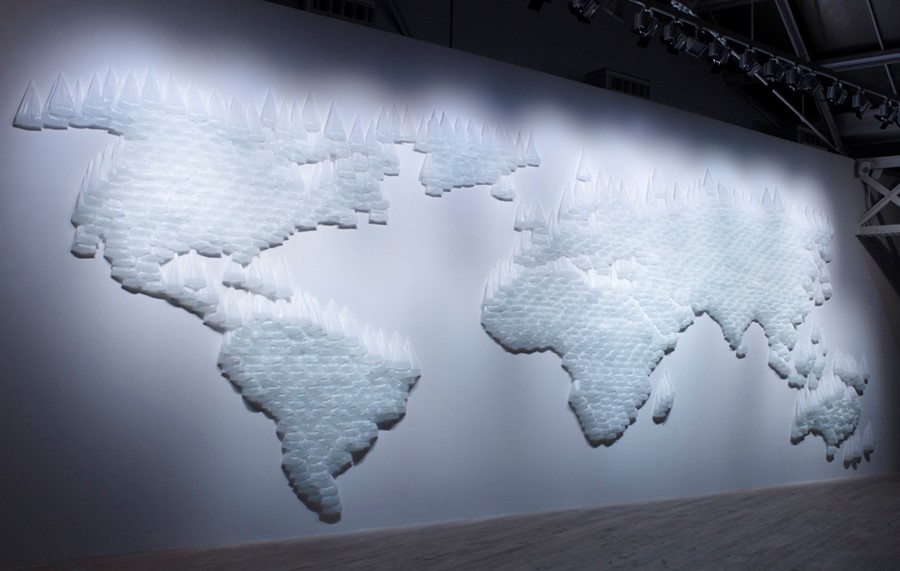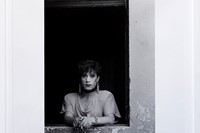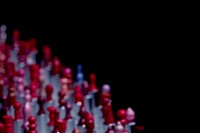Chile’s relative absence on the global map of contemporary art might be due to a lack of the necessary infrastructure. Unlike the big players from Latin America, countries like Mexico and Brazil with their well-established system of biennales and
Chile’s relative absence on the global map of contemporary art might be due to a lack of the necessary infrastructure. Unlike the big players from Latin America, countries like Mexico and Brazil with their well-established system of biennales and galleries, the link to the international art world for Chilean artists has to come from private supporters. One of the biggest collectors, and with his twenty-six years the youngest member on Tate’s Latin American acquisition board is Juan Yarur, whose collection is now on show for the first time in a concise solo exhibition split between Phillips de Pury’s headquarters at Howick Place and a separate room in the Saatchi Gallery on King’s Road.
The name of the show, Tectonic Shift, hints at the political change that occurred after a long dictatorial regime finally came to an end in 1990. "After Pinochet was gone the artists had to face a completely new set of problems,"explains curator Cecilia Brunson. "A political résistance in the traditional sense, like the heavily theoretical Avanzada led by writer Nelly Richard, wasn’t necessary any longer." And indeed, the only overtly critical pieces in the show are Paz Errázuriz's subtle black and white photographs of transvestites, banned from public life in their time of capture, back in 1983.
Objectives have changed since then and now artists deal with a post-political consumer society, which leads them to knit 80 kilos of rubber bands into a column, as Catalina Bauer does, or shape 2000 lipsticks into little turrets, carved out with precision by Livia Marin. Another route the artists choose to explore are their European roots. Tomás Rivas creates a mural of Raphael’s School of Athens and Josefina Guilisasti takes inspiration from floral still life painting. But they also challenge the decadent masterpieces of classical Europe. In Rivas’s work, the perspective is distorted, the philosophers have left the scene and the façade has begun to crumble. The floral chinoiserie in Guilisasti’s canvases is partly broken and leaves us with a beautiful, but unsteady impression.
It is a new thing that an auction house stages a public show which is not a selling exhibition. One reason is to tap into the market of art consulting and the ability to help build a collection, which was formerly the sole domain of gallerists. "But who would you trust more, a dealer representing around ten artists, or an auction house, that has access to the whole market?" asks Sebastien Montabonel, European senior specialist for photography at Phillips de Pury & Company who grants this venture the potential for further growth.
Text by George Ghon
Tectonic Shift at Philips de Pury at Saatchi Gallery, Duke of York's HQ, London until 16 January; at Phillips de Pury & Company, Howick Place, London between 4 January - 28 January 2011.



